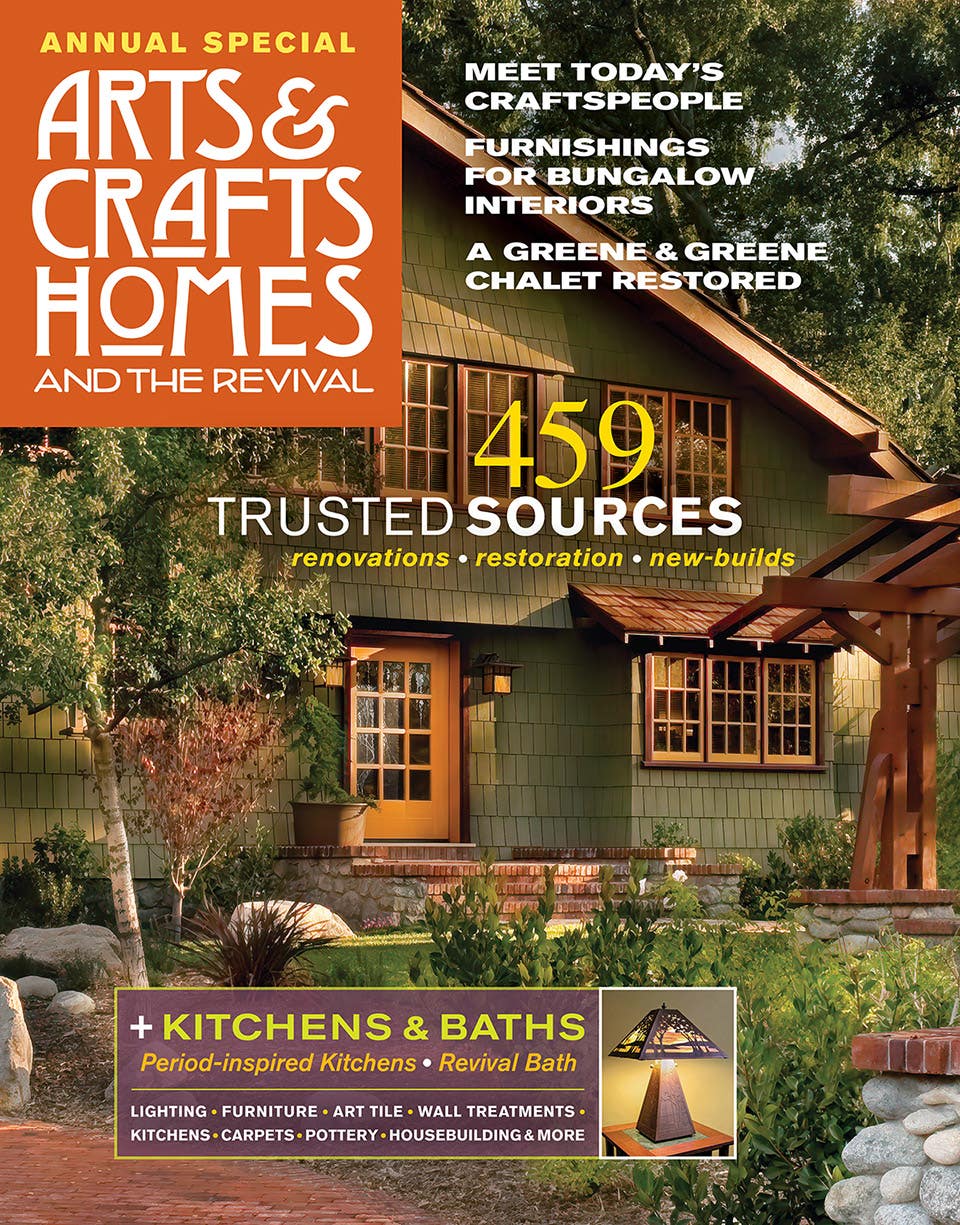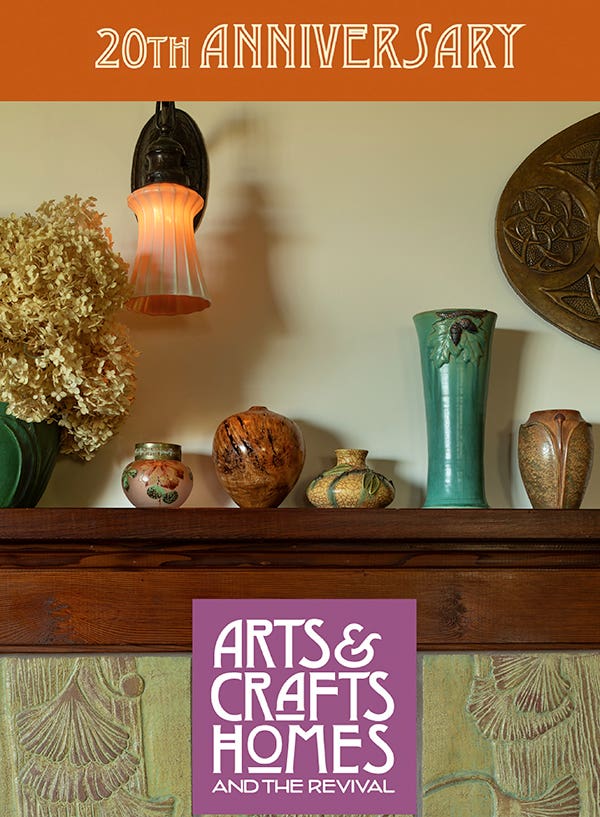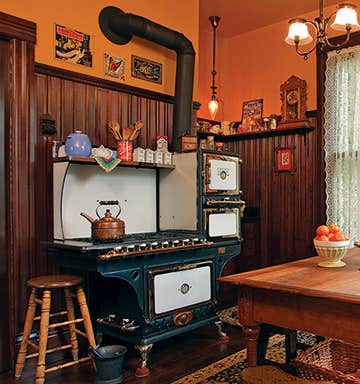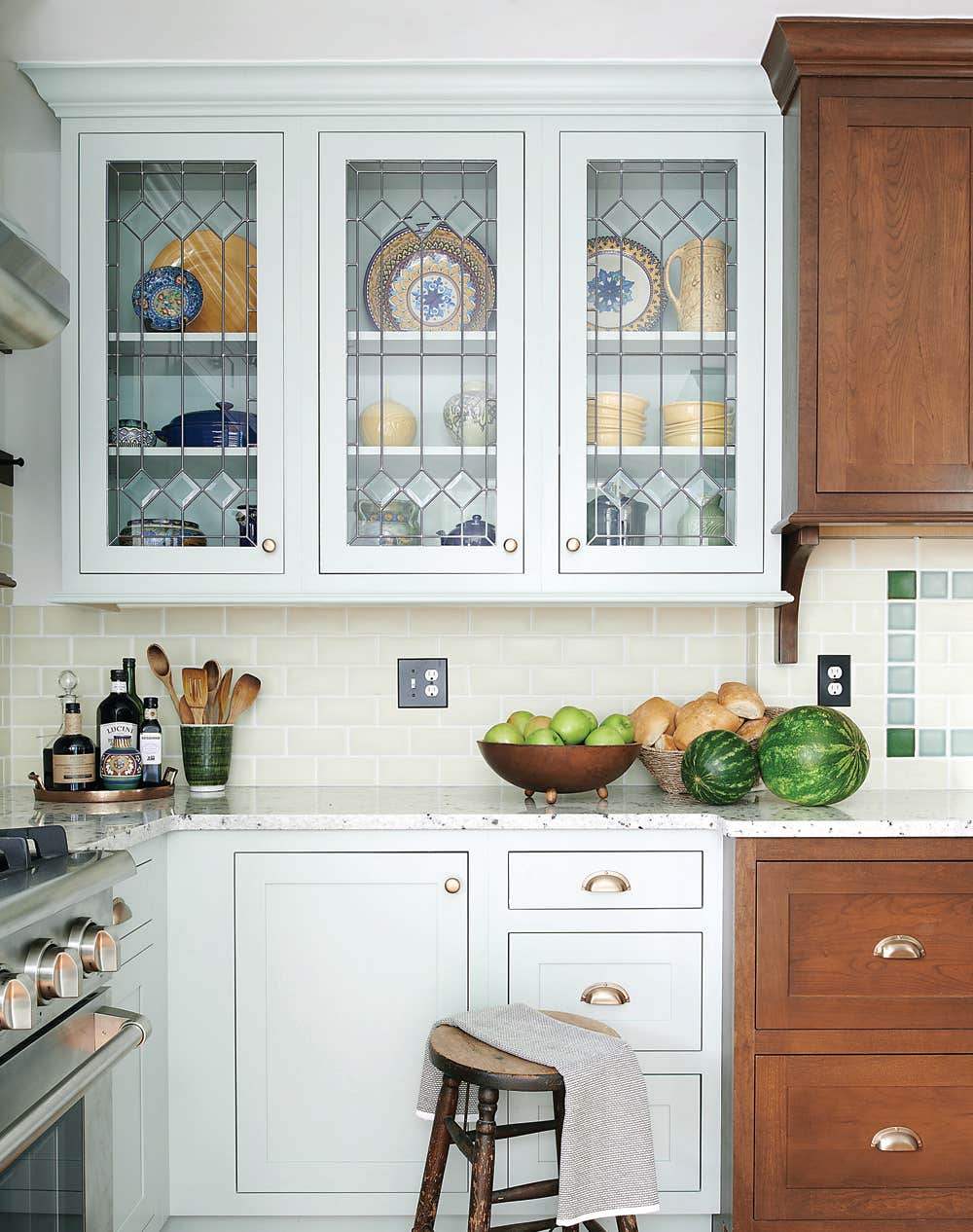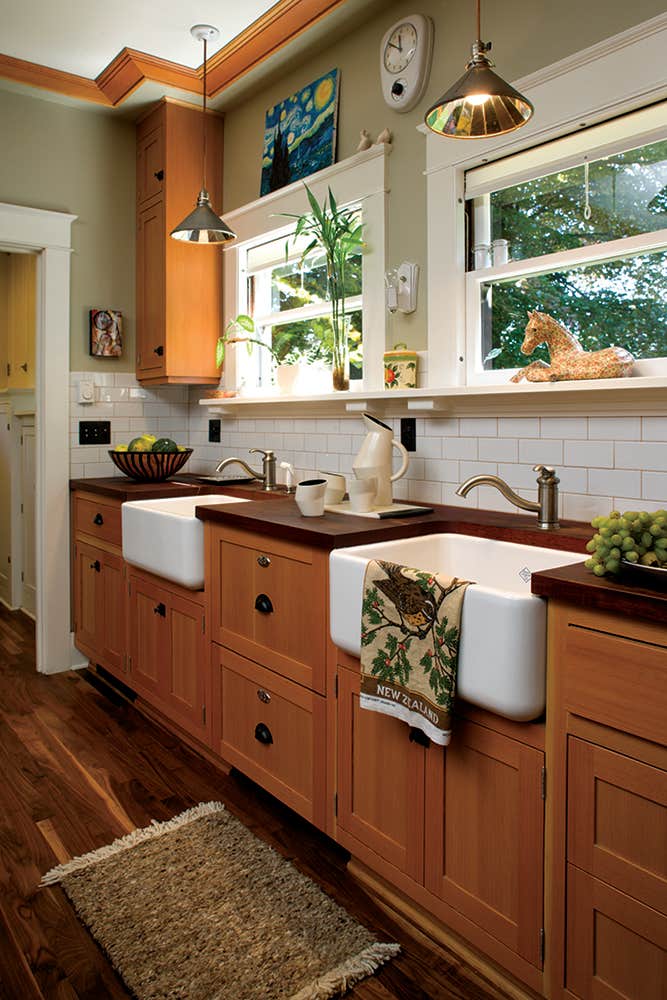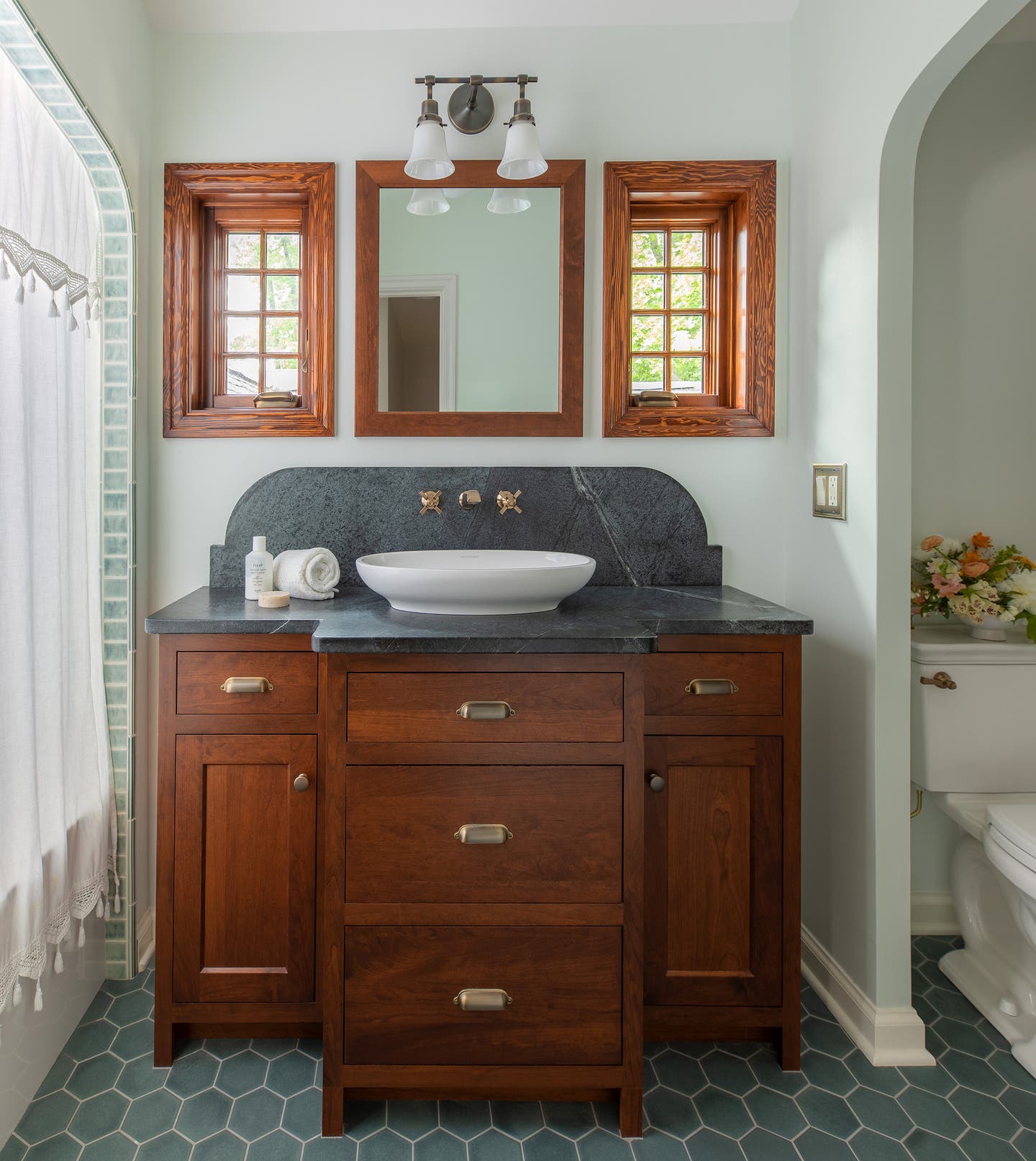Bathrooms for the Craftsman Era Home
Taking a look at options for the Craftsman-era bathroom.
Designing for clients in the Arts & Crafts enclave of Mountain Lakes, New Jersey, Carisa Mahnken has produced stunning period-inspired bathrooms, all of them unique. She’s taken two different approaches: 1. Keeping it simple with white tile and fixtures for the “sanitary” look popular around the turn of the 20th century. 2. Leaning toward the recent Craftsman Revival, using oak woodwork and stylish lighting, earthy tones, and perhaps art tile.
The blue “seashell” room was designed as a children’s bath. Simple but colorful, it has such child-friendly elements as a wave-pattern border in the tile floor, and a wainscot with a top rail for display of found treasures. On the practical side, light switches are set lower on the wall and the beveled mirror is hung at a downward angle so a small person can see the reflection. Sink and toilet are reproductions of vintage fixtures.“With little kids,” Mahnken says, “I didn’t want a hard-to-clean-under clawfoot tub, so we built an enclosure around a standard tub as a nod to the corner tubs that were popular in the 1920s.”
The more “masculine-looking” bath was designed for teenage boys, and is clearly Craftsman: dark oak trim elements flow into rich terra-cotta walls, a warm contrast to the crackled subway tile chosen in an off-white color.
For another client in a Tudor-inspired Craftsman house, Mahnken and architect Joan Nix eliminated a fourth bedroom to enlarge a master suite with a spacious bathroom and closet. The centerpiece of the bath is a deep slipper tub. Salvaged from demolished space elsewhere in the house, it nestles in a corner beneath a high, diamond-pane window. A hefty cap rail carries throughout the room. To keep the design restful, walls are clad in pillowed marble tile, set in a staggered brick pattern. (“Pillowed” means that the tile was made with slightly rounded corners.) The designer chose a similar marble for the floor. To play off the dark woodwork, Mahnken used deep jewel-tone colors throughout this house. The master bath’s soft, greyed-down blue is no exception. “You have to work with the era’s dark woodwork and not fight it,” she says.
Great Tile!
The white subway tile so familiar from bathrooms of the ’teens and ’twenties is a versatile backdrop for bungalow baths. Use white fixtures and period-friendly lighting, and the look is almost identical to originals. Add art tile and some natural-finish wood, plus a period rug or curtains, and it’s a revival room.
Period Furniture & Fixtures
Built-in furnishings—a linen closet, window seat, or shelving set into walls—makes best use of space. Freestanding furniture pieces, especially if they’re vintage, add to the period look of an unfitted room while providing even more storage. A salvaged sink or tub may become the centerpiece of the room, but today’s reproduction fixtures are perfectly compatible in design and scale. Revival baths are often decorated like other rooms, down to wallpaper, art, and textiles.
Patricia Poore is Editor-in-chief of Old House Journal and Arts & Crafts Homes, as well as editorial director at Active Interest Media’s Home Group, overseeing New Old House, Traditional Building, and special-interest publications.
Poore joined Old House Journal when it was a Brooklyn-brownstoner newsletter in the late 1970s. She became owner and publisher and, except for the years 2002–2013, has been its editor. Poore founded the magazines Old-House Interiors (1995–2013) and Early Homes (2004–2017); their content is now available online and folded into Old-House Journal’s wider coverage. Poore also created GARBAGE magazine (1989–1994), the first unaffiliated environmental consumer magazine.
Poore has participated, hands-on, in several restorations, including her own homes: a 1911 brownstone in Park Slope, Brooklyn, and a 1904 Tudor–Shingle Style house in Gloucester, Massachusetts, where she brought up her boys and their wonderful dogs.

